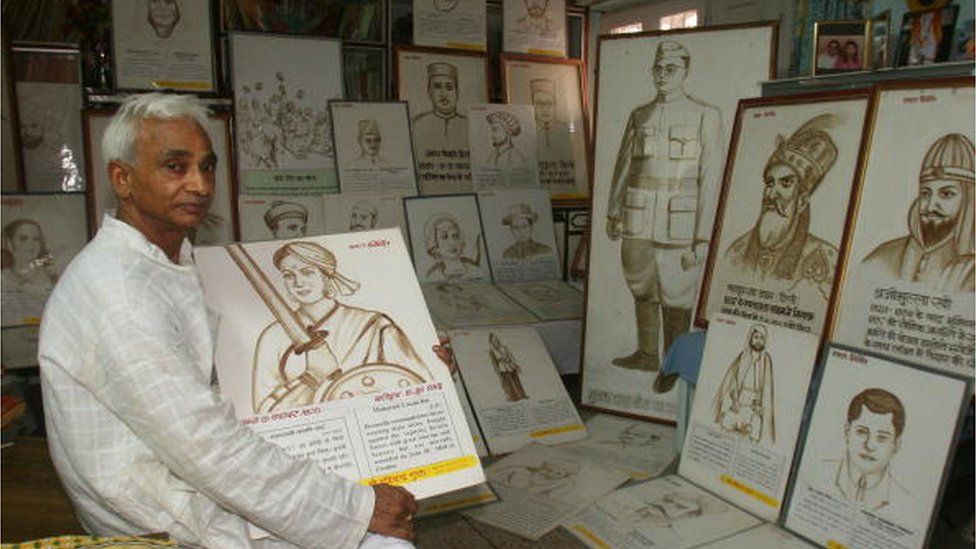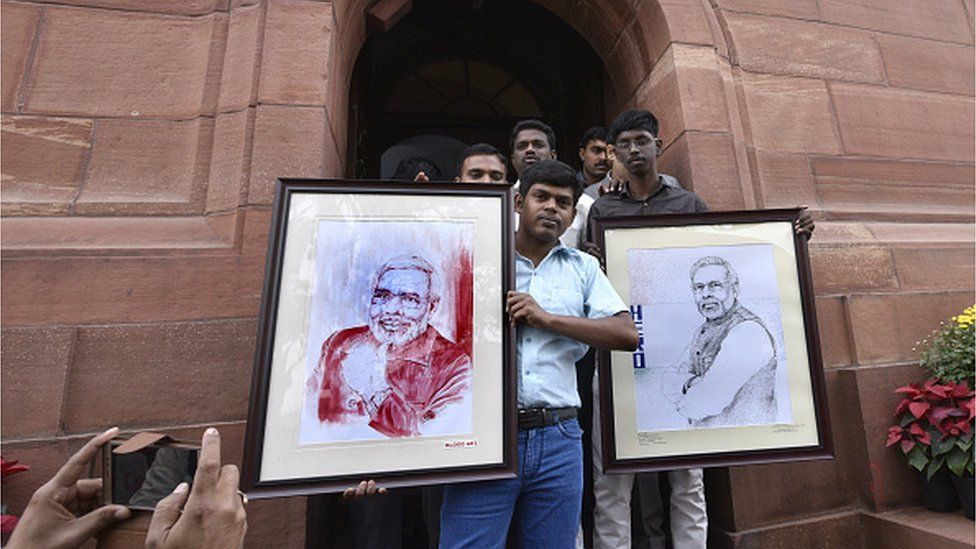Ukraine: Safety Systems Of Zaporizhzhia Nuclear Plants Complex – Analysis

Ukraine's Zaporizhzhia is Europe's largest nuclear power plant (Image: Engergoatom)
By Manohar Parrikar Institute for Defence Studies and Analyses (MP-IDSA)
By Aasi Ansari*
On 27 February 2022, the International Atomic Energy Agency (IAEA) was alerted by Ukraine’s Foreign Ministry that the Russian army was approaching the Zaporizhzhia Nuclear Power Plants (NPP) complex.1 Within a week, Russia informed IAEA that its military took control of the area around the Zaporizhzhia NPP.2 After the Fukushima Daiichi accident, this was the first time when the IAEA’s International Incident and Emergency Centre (IEC) immediately went to the highest alert.3 The Director General of the IAEA, Rafael Grossi, warned that an accident at nuclear facilities could have severe repercussions.4
The shellings and war activities near Zaporizhzhia NPP have raised concerns in the international community about the safety and security of the nuclear reactors. Grossi termed the shellings as ‘playing with fire’ due to the risk of nuclear catastrophe.5 Concerns about the quality of the safety systems of the reactor and the ability of the reactor design to withstand missile attacks were raised. The possibility of a technological error that could lead to an accident similar to Chernobyl, or a blackout situation similar to Fukushima, were also raised.
The IAEA Director General called for restraint and reiterated the seven pillars of nuclear safety and security based on existing nuclear safety and security conventions. These are the need to maintain the physical integrity of the facilities; a functional security system and equipment; staff being able to do their duties without any pressure; availability of an off-site power supply; uninterrupted transportation and supply chain from and to the site; effective monitoring system and emergency preparedness and response measures; and reliable communication with the regulator and others.6
After Russia took control of Zaporizhzhia plant under the management of Russian state atomic energy corporation ‘Rosatom’7 , staff were required to take approval from the local Russian commander to operate and maintain the power plant.8 The President of Ukrainian national nuclear energy generation company Energoatom9 , informed the IAEA in March 2022 that about 400 Russian soldiers were present at the plant.10
Reports noted that the Russian army was using the plant as a cover to fire at the city.11 In the ongoing conflict, multiple arms were used at Zaporizhzhia nuclear power plant. For instance, on 4 March 2022, the first missile hit the ZNPP training building causing a fire.12 No radiation leakage though was detected.13 Later the fire was extinguished14 and some unexploded munition found at that training building were disposed.15 Such indiscriminate use of weapons was said to be affecting the morale and emotional state of the plant employees,16 violating the third pillar of nuclear safety and security.
The war activities have compromised other pillars of nuclear safety and security as well. For instance, the transfer of safeguards data from ZNPP was interrupted multiple times though it was re-established within few days.17 Due to the shellings, the plant’s external power supply system was damaged, a unit was disconnected from the grid, a security guard at ZNPP was injured, spent fuel storage facility sustained damages in its walls, but there was no damage to the spent fuel container nor was any radiation leakage detected.18
After Russian shellings became frequent, the Ukrainian government requested the IAEA and UN Secretary-General Antonio Guterres to redouble their efforts.19 In response, the IAEA delivered monitoring equipment to ZNPP offered by Australia and France, which are among 12 of IAEA’s ‘Response and Assistance Network ’ (RANET) countries. The IAEA also delivered more than 160 radiation measurement devices and protective equipment, including masks, gloves, full-body suits, among others.20
While shellings near Zaporizhzhia do involve serious risks, they may not result in an accident like Chernobyl or Fukushima. The Chernobyl accident happened due to insignificant understanding and lack of safety technology.21 The reactors of Chernobyl NPP did not have a containment building.22 Modern reactors like Zaporizhzhia are designed with protection against events such as aircraft crashes, fire, explosions, flood, and extreme meteorological conditions, etc.23 The reactors of Zaporizhzhia have 1.2 meters thick concrete shell and are designed to withstand explosions and crash of an airplane.24 Thus, it can be said that the containment building should be able to resist missile attacks.
Other than the reactor, the spent fuel storage facility contains liquid and solid waste which can cause potential radiation hazard, if damaged. However, after multiple shellings at Zaporizhzhia plant, the spent fuel container was not damaged and the cooling system has been good enough to maintain the temperature and radiation level under control.25
Without external power, the reactor as well as the spent fuel storage might lose the cooling system. Therefore, multiple power supply systems are needed. If the external power supply is disconnected for cooling water to circulate, the loss of power could result in an accident like Fukushima. There are three back-up power supply of 330 kV and three off-site power lines of 750 kV connected to a nearby thermal power plant in case the back-up power supply gets disconnected.26 Even if the reactor is shut down, it still requires electricity to maintain the reactor temperature, hence backup power and off-site power supplies are crucial for nuclear safety.27
If the external sources of power supply are lost, then the nuclear plant has to depend on emergency diesel generators. This situation has been occurring time and again during the conflict.28 When the plant lost the power for cooling system, it first relied upon the power generated by the plant itself and then on back-up power line linking to the grid through the nearby thermal power plant.29 There are 20 diesel generators on site and nine of them are operating (as of November 2022) to provide power to all the six reactors and ensure the safety of the plant.30 These diesel generators have enough power to operate up to 15 days without any external power supply.31 The reactor had to rely on diesel generator multiple times through the conflict but every time the emergency diesel generators started automatically and operated till the back-up power was available. 32
The IAEA was not able to visit ZNPP since the conflict began but on 1 September 2022, experts, as part of the IAEA Support and Assistance Mission to Zaporizhzhia (ISAMZ), were finally able to arrive at the Zaporizhzhia NPP.33
After 20 November 2022, there has been no shelling on the site per se but there has been shelling in the nearby areas. Zaporizhzhia NPP has been reconnected to the off-site power through a 750 kV external power line and a 330 kV back up line.34 An additional 330 kV power line as a back-up is being repaired, as informed to the IAEA by Rosatom.35 On 31 October 2022, four of the six reactors were kept under cold shutdown which requires less energy for cooling and the other two reactors are under hot shutdown, which allows them to supply heat to the nearby city.36
In conclusion, it can be said that Zaporizhzhia NPP has better and proven technology with multiple safety systems and multiple power supply, along with a strong containment building that is designed to withstand terrorist attacks and crash of an airplane.37 Despite the ongoing military activities, the IAEA has been inspecting the Zaporizhzhia nuclear facilities and has stated that no radiation leakage has been detected in those facilities. Nonetheless, the complete demilitarisation of Zaporizhzhia NPP is essential to assure the full safety of the plants.
Views expressed are of the author and do not necessarily reflect the views of the Manohar Parrrikar IDSA or of the Government of India.
*About the author: Mr Aasi Ansari is Research Intern at the Centre for Nuclear and Arms Control, Manohar Parrikar Institute for Defence Studies and Analyses, New Delhi.
Source: This article was published by Manohar Parrrikar IDSA
- 1.“Update 4 – IAEA Director General Statement on Situation in Ukraine”, International Atomic Energy Agency (IAEA), 28 February 2022.
- 2.“Update 6 – IAEA Director General Statement on Situation in Ukraine”, IAEA, 2 March 2022.
- 3.“The Safety, Security and Safeguards Implications of the Situation in Ukraine”, IAEA, 9 June 2022.
- 4.“Update 4 – IAEA Director General Statement on Situation in Ukraine”, no. 1.
- 5.“Update 128 – IAEA Director General Statement on Situation in Ukraine”, IAEA, 20 November 2022.
- 6.“IAEA Director General Grossi’s Initiative to Travel to Ukraine”,IAEA, 4 March 2022.
- 7.“IAEA, Rosatom Sign Agreement to Strengthen IAEA Nuclear Infrastructure Capacity Building”, IAEA, November 2017.
- 8.“Update 13 – IAEA Director General Statement on Situation in Ukraine”, IAEA, 6 March 2022.
- 9.“Ukrainian State Nuclear Energy Enterprise”, Energoatom.
- 10.“Update 19 – IAEA Director General Statement on Situation in Ukraine”, IAEA, 12 March 2022.
- 11.Matthew Sparkes, “Zaporizhzhia Nuclear Power Plant Not Designed to Withstand Fighting”, Newscientist, 14 August 2022.
- 12.“Update 11 – IAEA Director General Statement on Situation in Ukraine”, IAEA, 4 March 2022.
- 13.Ibid.
- 14.Ibid.
- 15.“Update 22 – IAEA Director General Statement on Situation in Ukraine”, IAEA, 15 March 2022.
- 16.“Update 42 – IAEA Director General Statement on Situation in Ukraine”, IAEA, 4 April 2022.
- 17.“Update 84 – IAEA Director General Statement on Situation in Ukraine”, IAEA, 29 June 2022.
- 18.“Update 89 – IAEA Director General Statement on Situation in Ukraine”, IAEA, 9 August 2022.
- 19.“IAEA Director General’s Introductory Statement to the Board of Governors”, IAEA, 6 June 2022.
- 20.“Update 86 – IAEA Director General Statement on Situation in Ukraine”, IAEA, 14 July 2022; “IAEA Head Travels to Ukraine to Start Delivery of Nuclear Safety and Security Assistance”, IAEA, 29 March 2022.
- 21.“Chernobyl Accident 1986”, World Nuclear Association, April 2022.
- 22.“What Caused the Chernobyl Accident”, IAEA.
- 23.“Design of Reactor Containment Systems for Nuclear Power Plants”, IAEA, 2004.
- 24.“Attack on Ukraine Nuclear Plant – What is at Stake?”, Chatham House, 12 August 2022.
- 25.“Update 16 – IAEA Director General Statement on Situation in Ukraine”, IAEA, 9 March2022.
- 26.“Update 103 – IAEA Director General Statement on Situation in Ukraine”, IAEA, 17 September 2022.
- 27.Ibid.
- 28.“Ukraine’s Zaporizhzhya Nuclear Power Plant Lost Off-site Power Again, Diesel Generators Providing Back-up Electricity”, IAEA, 3 November 2022.
- 29.“Update 103 – IAEA Director General Statement on Situation in Ukraine”, no. 26.
- 30.“Ukraine’s Zaporizhzhya Nuclear Power Plant Lost Off-site Power Again, Diesel Generators Providing Back-up Electricity”, no. 28.
- 31.Ibid.
- 32.“Update 105 – IAEA Director General Statement on Situation in Ukraine”, IAEA, 21 September 2022; “Update 116 – IAEA Director General Statement on Situation in Ukraine”, IAEA, 21 October 2022.
- 33.“Update 97 – IAEA Director General Statement on Situation in Ukraine”, IAEA, 3 September 2022.
- 34.“Update 132 – IAEA Director General Statement on Situation in Ukraine”, IAEA, 24 November 2022.
- 35.“Update 134 – IAEA Director General Statement on Situation in Ukraine”, IAEA, 2 December 2022.
- 36.“Update 122 – IAEA Director General Statement on Situation in Ukraine”, IAEA, 31 October 2022.
- 37.“Attack on Ukraine Nuclear Plant – What is at Stake?”, no. 24.

Manohar Parrikar Institute for Defence Studies and Analyses (MP-IDSA)
The Manohar Parrikar Institute for Defence Studies and Analyses (MP-IDSA), is a non-partisan, autonomous body dedicated to objective research and policy relevant studies on all aspects of defence and security. Its mission is to promote national and international security through the generation and dissemination of knowledge on defence and security-related issues. The Manohar Parrikar Institute for Defence Studies and Analyses (MP-IDSA) was formerly named The Institute for Defence Studies and Analyses (IDSA).








